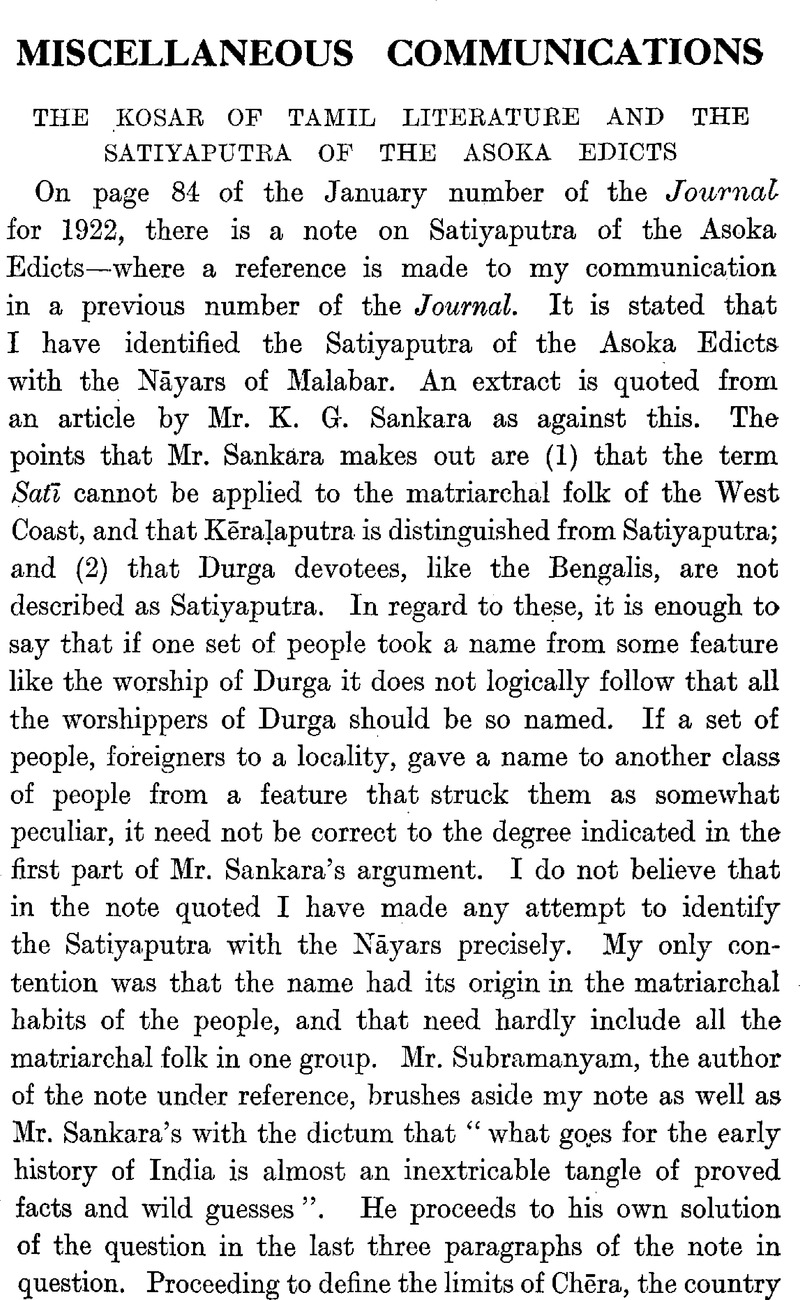No CrossRef data available.
Article contents
The Kosar of Tamil Literature and the Satiyaputra of the Asoka Edicts
Published online by Cambridge University Press: 15 March 2011
Abstract

- Type
- Miscellaneous Communications
- Information
- Copyright
- Copyright © The Royal Asiatic Society 1923
References
page 610 note 1 Paraṇar in Kuruṁtogai 73.
page 610 note 2 Māmūlanār in Aham 15.
page 610 note 3 Pālai-pāḍiya Peruṁkaḍuṅgō in Naṛṛinai 391.
page 610 note 4 Paraṇar in Aham 196 and 262.
page 610 note 5 M. M. Svāminātha Aiyar's edn., p. 3, 1. 2.
page 610 note 6 Kuruṁtogai 15. Peruṁkaḍuṅgō.
page 611 note 1 Aham 251.
page 611 note 2 Aham 90 and 220.
page 611 note 3 Beginning of the South Indian History, pp. 94–5.
page 611 note 4 Puram 169.
page 611 note 5 That the Kōśar were known in four divisions is clearly stated in II. 508–9 of the Maduraik-Kāñji. The author there institutes a comparison between the appearance of the four groups of councillors at the Pāṇḍyan court (other than the ministers) and the coming of the four sections of the Kōśar of “ unfailing word ”.
page 611 note 6 There is a Śellūr between the railway station, Koraḍāchēri, in the Tanjore-Negapatam line, and Koḍaivāśal, a place of some importance now, and of great repute in the age of the Śaṅgam. The only objection to the identification is that it is not as near the sea as the text would require. The local Aiyanār- (Śāsta) temple seems identifiable with the “ sacrificial abode ” of Paraśurāma.
page 612 note 1 Aham 15.


